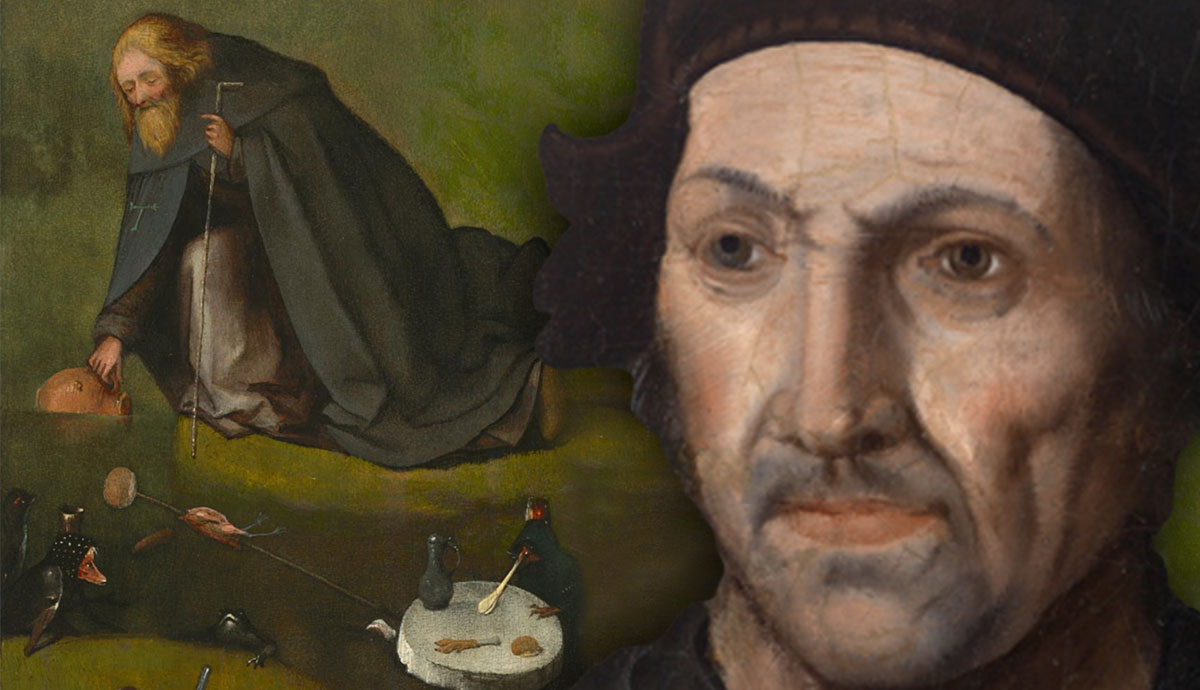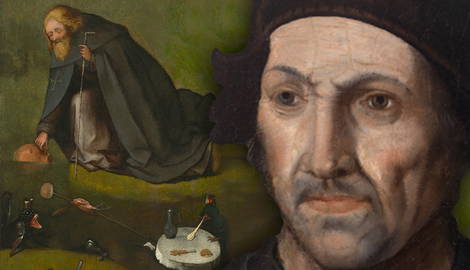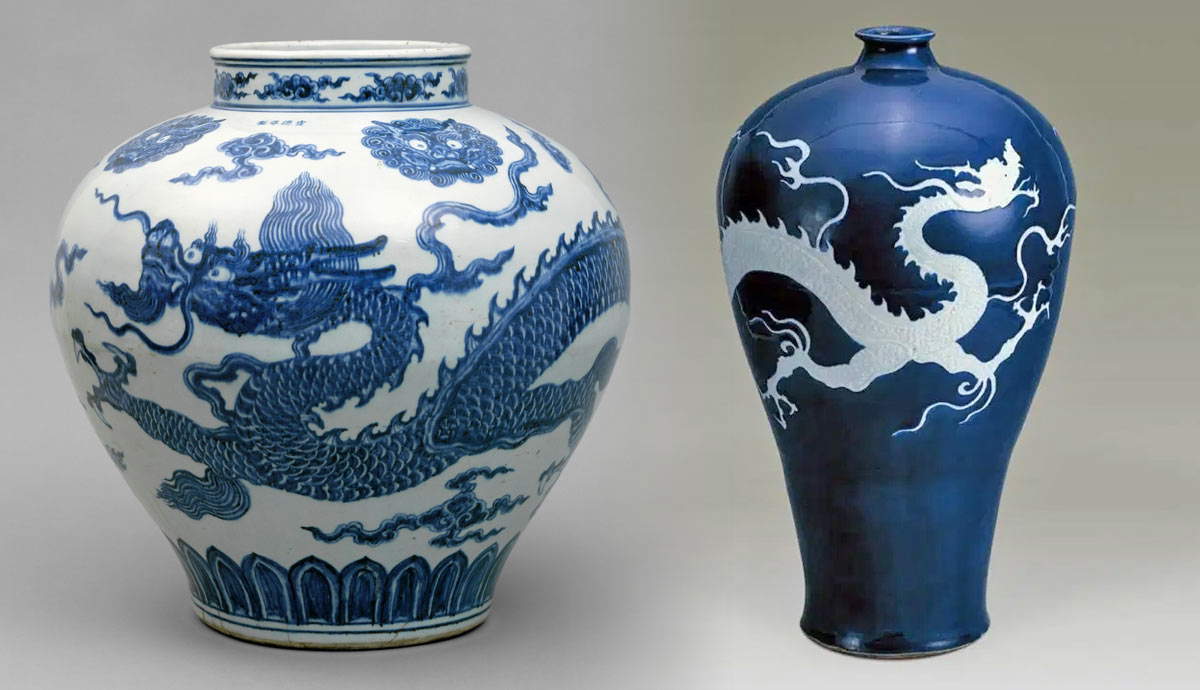
Unlike some artists, Hieronymus Bosch was famous in his own time and inspired a generation of artists with his groundbreaking style and unusual subject matter. Even in his pieces that seem more straightforward and less fantastical, Bosch often wove in nuanced layers of meaning, moralizing allegory, and thinly veiled criticisms of various societal classes. Discover what scholars have unearthed about the man behind the weirdly wonderful works of art.
Personal Life
Although the sixteenth century is removed from the present by 500 years, some artists from that age left behind diaries, contracts, ledgers, and other first-hand materials from which scholars can piece together loose biographies.

Unfortunately, no such records from Hieronymus Bosch’s own hand exist. However, the town of ‘s-Hertogensbosch, where he was born, kept municipal records that outline some of his major life events. Though the artist’s precise date of birth was not documented, scholars estimate that he was born sometime around 1450-1460. His marriage to Aleyt Goyaerts van den Meervenne had occurred by 1481, at which point a property dispute arose between the married couple and Bosch’s brother-in-law.
There is little known about Bosch’s training. Although it is generally believed that he learned the trade from his father, also an artist, there is no corroborative evidence of this, nor any surviving paintings of his father’s which might reference the origin of Bosch’s style. While many sixteenth-century artists, such as Albrecht Dürer, traveled extensively throughout Europe, there are no telltale signs in his art of adherence to the particular manner of another city in which Bosch might have spent significant time. Consequently, most researchers believe any journey away from his hometown was likely brief.
What remains of the artist’s business dealings comes from contracts for commissioned works kept by patrons. The Brotherhood of Our Lady, a religious organization of which Bosch was a member, paid him to design a stained glass window, a chandelier, and a crucifix, but no paintings are mentioned. He was also commissioned by Philip, Duke of Burgundy, to create a large-scale altarpiece depicting the biblical scene of the Last Judgment, a fact which speaks to his status in the art world at the time. The Brotherhood mentions a funeral mass to commemorate Bosch’s death in 1516.
Medium & Method

The Northern Renaissance was a time of transition as it saw great advances in artistic technology as well as changes in patrons’ tastes. Dating back to ancient Egypt, the standard medium for painting for centuries had been tempera, a durable and fast-drying mix of egg yolk and pigment. Sometime during the fifteenth century, oil paint emerged as the dominant medium, having been popularized by well-known artists such as Jan van Eyck. Despite its long drying time, the durability of oil paint helped it grow quickly in popularity, and it was the medium of choice for Hieronymus Bosch, most frequently applied to oak panels.
While x-ray imaging proves that Bosch often changed the compositions of his paintings while they were in progress, we also know that he created preliminary drawings for some of the more prominent elements of his well-known works. These range from detailed pen and ink drawings to much less developed images of composite beasts that would be categorized as studies. When looking at sketches such as Tree-man, now at the Albertina Museum in Vienna, the ovoid figure in the middle is clearly a forerunner of the famous tree-man in The Garden of Earthly Delights triptych.
As was common among successful Renaissance artists, Hieronymus Bosch had a workshop, and some of the few surviving municipal records mention payments made to his assistants. Unfortunately, critical information about the size of his workshop, how it functioned, and the level of involvement of his apprentices in the production of final works is not available.
Bosch’s Most Famous Works

When examining the body of work left behind by Hieronymus Bosch, the predominant themes of religion, sin, judgment, and morality are impossible to overlook though they are usually shrouded in symbolism. In a summary of his oeuvre, the more objectively religious work is often overlooked. It is important to note, however, that Bosch did paint many pieces that were more in keeping with the subject matter of his time, particularly early in his career. Commissions with biblical themes, such as Ecce Homo, which depicts its patrons in the bottom corner, would have provided a solid financial base from which to build a thriving painting practice.
Several of his most studied and debated pieces are his triptychs, or three-paneled works composed of a central panel flanked by two hinged panels to the left and right. The hinges allow these works of art to be viewed in either an “open” position or in a “closed” position. In Renaissance art, triptychs often functioned as altarpieces that would be opened or closed based on the liturgical cycles or specific masses being said. However, based on the subject matter, most art historians agree that Bosch’s The Garden of Earthly Delights, The Hay Wain, and The Temptation of Saint Anthony were most likely not displayed in churches.
What Does it All Mean Though?

What is behind the often chaotic, action-packed panels by the Netherlandish master? Looking at Bosch’s works centuries after he was operating, what we see can seem unsettling, confusing, and, put plainly, weird. However, in his book Bosch, Joseph-Emile Muller explains that the seemingly strange imagery would have been simultaneously familiar and exotic to his audience. It would have mirrored the ominous warnings preached from pulpits against sin and perhaps referenced characters from common tales or adages. In other words, some scenes that read as extremely bizarre today might have felt significantly less so in Renaissance Netherlands.
To illustrate, imagine someone 500 years from now viewing a painting depicting the nursery rhyme “Hey, Diddle, Diddle” with no frame of reference as to its use. It is not a perfect parallel because nursery rhymes are often nonsensical, and we can assume that Bosch was communicating complex and logical ideas, but the comparison highlights the importance of cultural context. At the same time, Bosch was not the only artist composing works of moral allegory by any means, though he was the first one to do so in the particular manner for which he became known, so credit must be given to the inventive nature of his execution.
The Incredible Reach of Hieronymus Bosch

The groundbreaking style that Bosch developed catapulted him to the status of a celebrity artist. Contemporaries such as Pieter Bruegel the Elder openly discussed the stylistic influence of Bosch’s work on their own, as seen in the pandemonium and scorched background of works like Dulle Griet. While it is not uncommon for artists to fall into obscurity after their deaths and to be “rediscovered” centuries later, such was not the case for Bosch.
His popularity continued to grow posthumously, partially as a result of the efforts of printmakers. Bosch’s life and death coincided with the rise of engravings, which made the work of famous artists easier to disseminate and available to a wider audience because of their price points.
Hieronymus Cock was one of the earliest successful printmakers in Antwerp, and he produced and marketed several prints that were attributed to Bosch and were certainly in the style of the artist, but no original works matching these prints have ever been found. Cock’s reliance on the artist’s fame to sell prints had the effect of Hieronymus Bosch remaining a household name in the decades following his death as numerous works were circulated throughout Europe under his name.
In addition, Bosch’s influence has extended for centuries into modern times and continues to delight and bewilder new generations of artists. The Surrealists of the early 1900s sought to destabilize the concept of reality in their fantastical, dreamlike compositions. While a movement as complex as Surrealism cannot be confined to one point of origin, artists associated with it have acknowledged the debt of gratitude owed to Bosch and Bruegel for their inspiration. When comparing elements of Bosch’s paintings with Salvador Dali’s works, such as Metamorphosis of Narcissus, the color palette, barren landscape, and hallucinatory creatures are easily recognizable.
Bosch Research & Conservation Project

Popularity, however, has its price. With so many artists inspired by Bosch, as well as those who created outright forgeries, differentiating between work by his hand and that of copyists or apprentices has proven to be incredibly difficult for experts. Fortunately, the Bosch Research and Conservation Project (BRCP) undertook a nine-year scholarly study of firmly attributed works by the artist alongside many which were in question.
They utilized a number of techniques in their research, including dendrochronology, which compares the tree rings on wood panels (Bosch’s support of choice) to a database of tree rings to help date the panels. While this is not a definitive method of dating a work, it can eliminate some works painted on wood that was not harvested until after Hieronymus Bosch’s death from his catalog raisonné.
In addition, the BRCP examined the underpainting of many of the works to help verify their authenticity. During the 16th and 17th centuries, artists in Bosch’s workshop or those forging his work were focused on achieving finished products that closely resembled the original works of the artist. However, Bosch regularly painted over various aspects of a composition until it suited him, frequently opting to add or remove figures throughout his process.
X-radiography was not used on art until the twentieth century, so copyists would have had no way of knowing that the iterations underneath a final image might ever be viewable. The presence of some of these “lost” figures beneath the visible layers of paint has served to help authenticate some works, such as The Temptation of Saint Anthony at the Nelson-Atkins Museum of Art in Kansas City, Missouri. As a result of the efforts of the BRCP, we now have a much more comprehensive idea of the output of this incredible visionary.
What Do We Actually Know About Hieronymus Bosch With Certainty?

Sadly, the list is quite short. But perhaps this has contributed to the enduring fascination with the artist and his other-worldly creations. Without identifiable artistic influences, mentors, or written correspondence to point back to, Bosch’s enigmatic work is left open to interpretation. As the art historian Erwin Panofsky stated about Bosch’s art: “We have bored a few holes in the door of the locked room; but somehow we do not seem to have discovered the key.”










